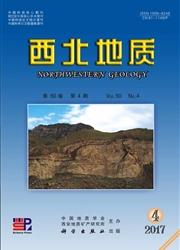

 中文摘要:
中文摘要:
冈底斯成矿带是在青藏高原上发育的巨型铜矿带,存在中侏罗世俯冲型、始新世同碰撞型和中新世后碰撞型三期斑岩成矿作用。其中,中新世出现了斑岩成矿大爆发,形成铜资源量超千万吨的中国第一大铜矿——驱龙铜矿在内的一系列大型-超大型斑岩铜矿床。通过大量详实的野外调查与综合研究,认为冈底斯含矿岩体并非传统的单一斑岩体,而是形成时间相近、多期次侵入的复式小斑(杂)岩体,其成矿及改造贯穿于复式小杂岩体的每次侵人过程。矿区大规模蚀变与矿化并非围绕某单一小斑岩体分布,而成矿物质及成矿流体也不是直接来源于浅侵位的小斑岩体,而是来源于地壳下部10km左右二次岩浆房的多次泵出。是深部同一岩浆房的岩浆不断演化的结果。多期次的岩浆侵入源源不断地供给成矿物质、成矿流体及成矿热动力,是形成大型一超大型斑岩铜矿床的极重要找矿标志。笔者提出“在相同环境下小(斑)杂岩体侵入的期次越多、岩性及成矿元素越复杂越有利于成大矿”这一理论新模型,丰富与完善了经典的斑岩铜矿成矿理论,对推动在冈底斯斑岩铜矿带进一步进行地质勘查评价工作部署及找矿突破具有重要的指导与借鉴意义。
 英文摘要:
英文摘要:
The Gangdese belt is the giant Cu belt in the Tibet Plateau where three periodic porphyry Cu mineralization were generated during the subduction in the Mid-Jurassic, collision in the Eocene, and post- collision in the Miocene, respectively. The Miocene is the most intensive porphyry Cu mineralization period when lots of large and super-large porphyry Cu deposits including the largest Qulong Cu deposit in China with the Cu resource over 10Mt were generated. Based on many detail field surveys and comprehensive studies, we concluded that the host intrusive is not the classical single porphyry but the composite small porphyry emplaced in multi-stages during the similar time. The mineralization and the subsequent modification followed the every emplacement of composite small porphyry. The large alteration and miner- alization do not center on the single porphyry and the ore-forming material and fluid are not directly from the porphyry but from the secondary magma chamber in about 10km underground. The composite small porphyry is generated during the magma evolution in the same magma chamber. The multi-stages magma emplacement supply ore-forming material, fluid and thermo-motive and are the most important prospecting indicators of large and super large porphyry Cu deposits. We presented a new metallogenic model that more emplacement times of composite small porphyry and more complexity of lithology and mineralized elements in the same geological setting are more suitable for the formation of large and super large deposits. This new model not only extends and supplements the classical porphyry Cu model but also has important guiding and reference meanings in the work plan for exploration and evaluation and in the prospecting breakthrough in the Gangdese Cu belt.
 同期刊论文项目
同期刊论文项目
 同项目期刊论文
同项目期刊论文
 期刊信息
期刊信息
